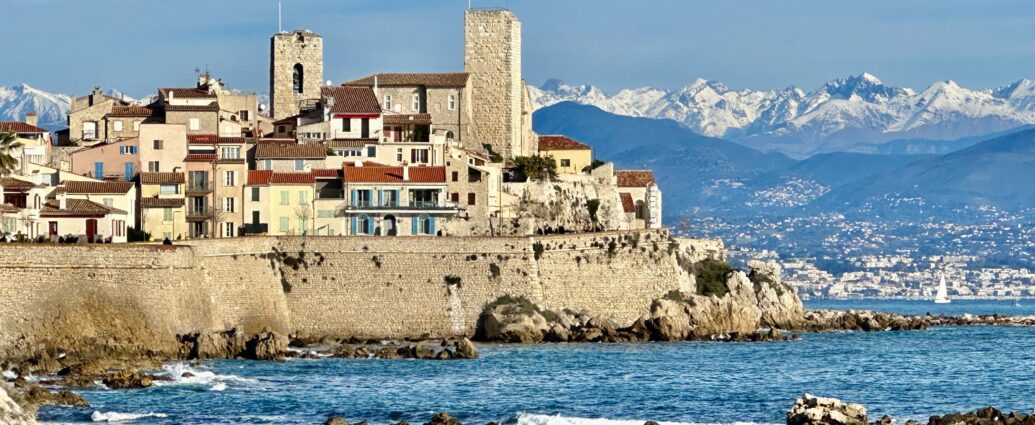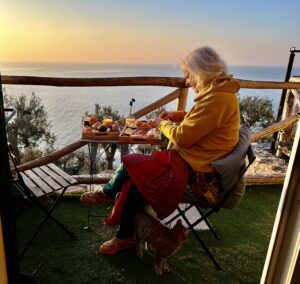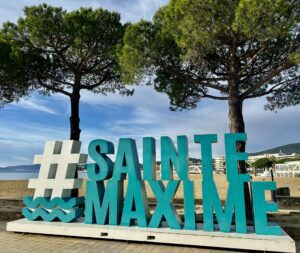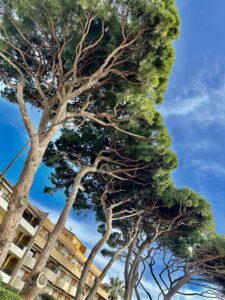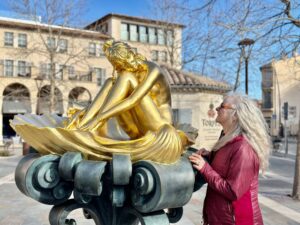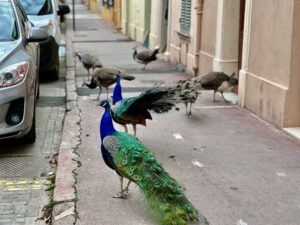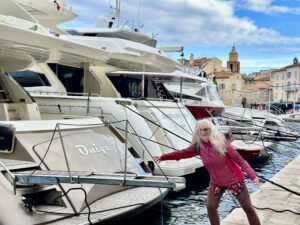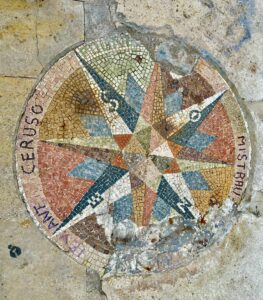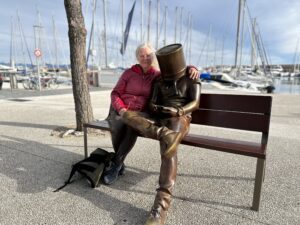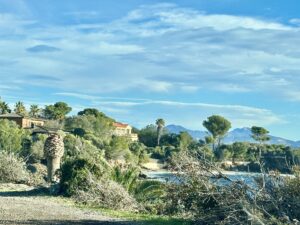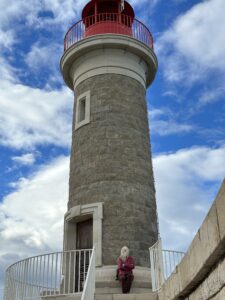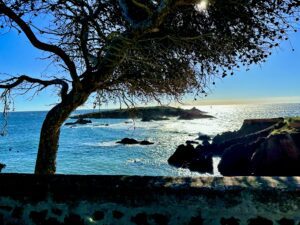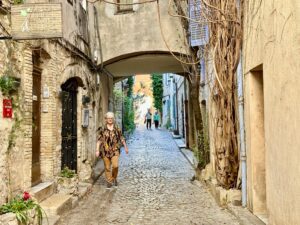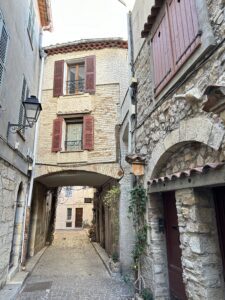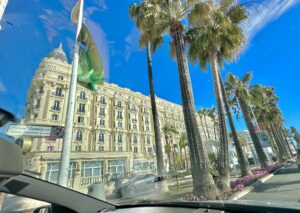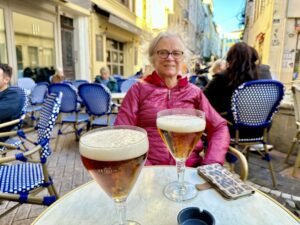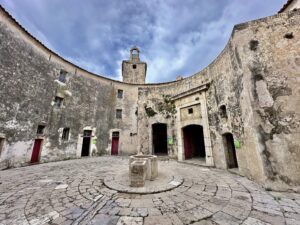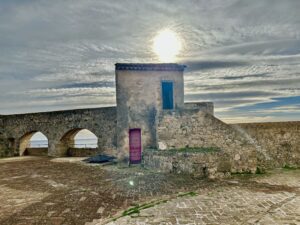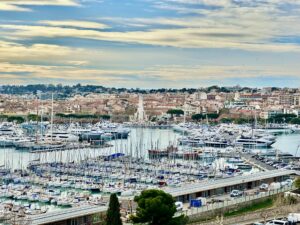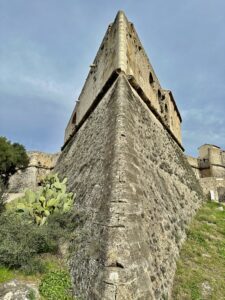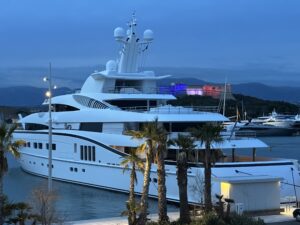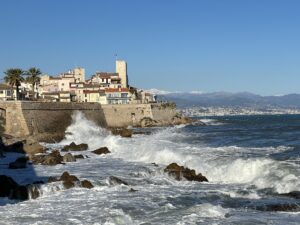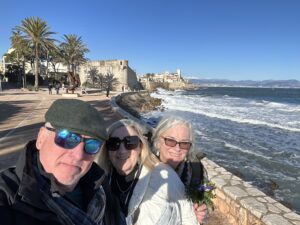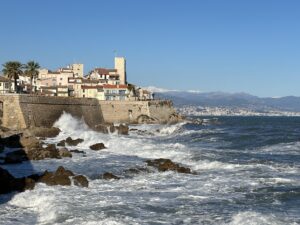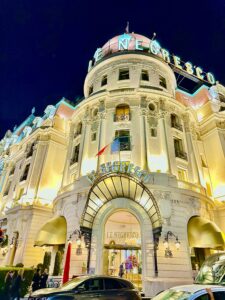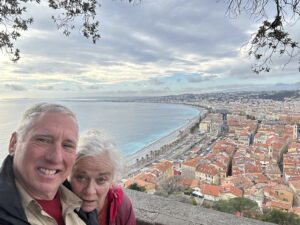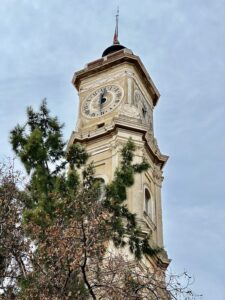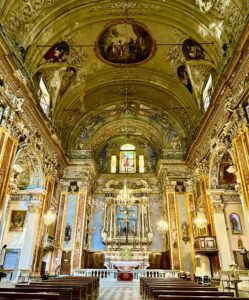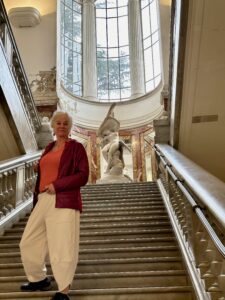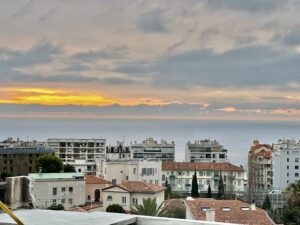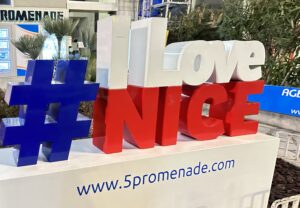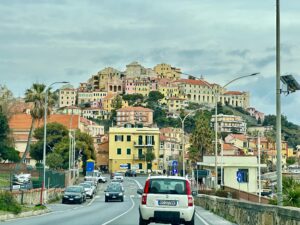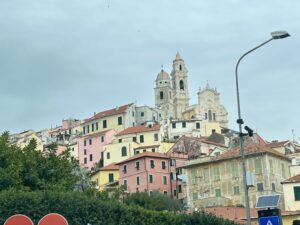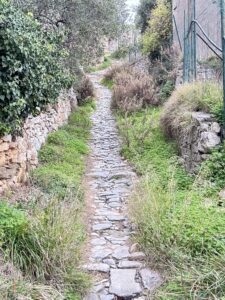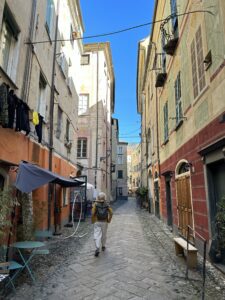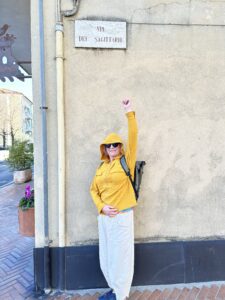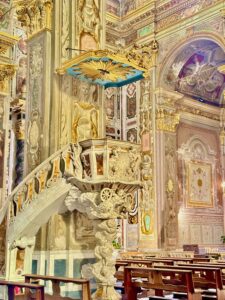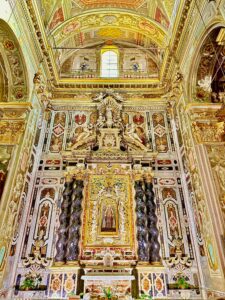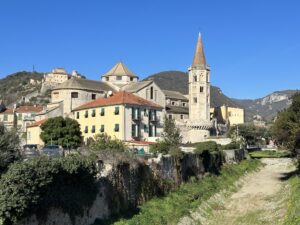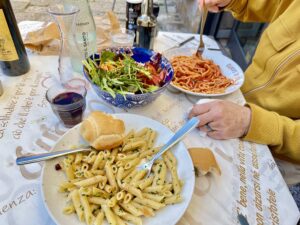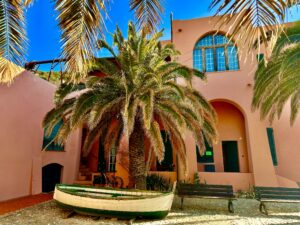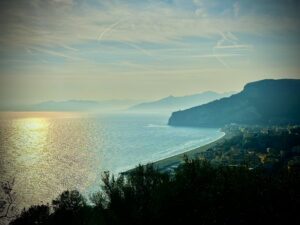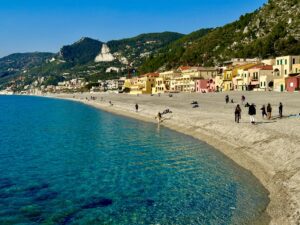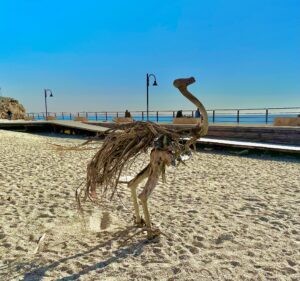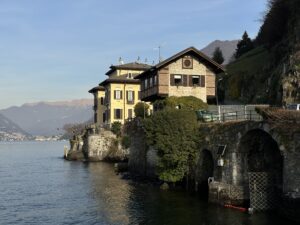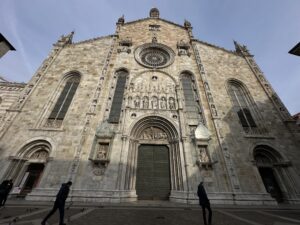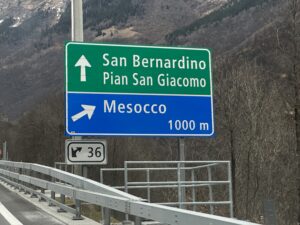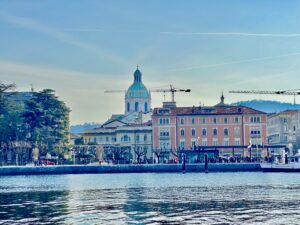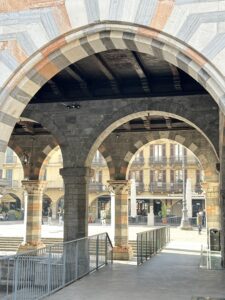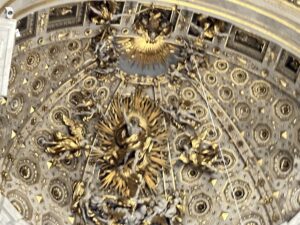Snowbirding in Southern France, Part Deux
Back from Morocco and the continuation of our Snowbirding in Southern France adventure. I’ve divided the Blog into three parts. First, the Southern France Snowbirding Blog, then the  Morocco adventure Blog, and this one, Part Deux. To read the beginning of this journey, link here. (Snowbirding in Southern France, Part Deux)
Morocco adventure Blog, and this one, Part Deux. To read the beginning of this journey, link here. (Snowbirding in Southern France, Part Deux)
The disastrous flight out of Morocco in our review mirror, we thought good times were ahead of us. They were, just not immediately. We found our car at the airport hotel parking lot without damage and our left-behind bags still in the trunk. Although we returned a week early, there was no refund. That’s OK, the hotel staff more than made up for it when the engine would not turn over, our battery was dead. The young lady from reception called her cousin, who also operated the airport shuttle we came in on. Before we could open the hood, he was there with jumper cables. Talk about earthly angles; he was one that day.
So we debated on our route, tolls, no tolls, highway, backroads, ocean view…. And we proceeded with the standard Zimmer mixture of road confusion and rage. Somehow, we finally made it to our next stop without incident, our egos intact, and a few minutes before check-in! Here we come Sainte Maxime!
Sainte Maxime
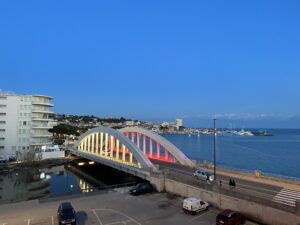 Our goal is to return to Vorarlberg, but slowly, very slowly. It’s still snowing in the hills, and the roads are inaccessible up at our level. Neither of us wants to hike the mountain with bags and ill-gotten purchases from France & Morocco on our backs or on a sled. We debated on Saintes Maxime or Saintes Tropez. St Tropez is where the Rich and Famous used to hang out. Impressive yachts, cute boutique shops, costly and empty for the season. Sainte Maxime is a bedroom community on the ‘French Rivera with open shops & restaurants. Good choice on our part.
Our goal is to return to Vorarlberg, but slowly, very slowly. It’s still snowing in the hills, and the roads are inaccessible up at our level. Neither of us wants to hike the mountain with bags and ill-gotten purchases from France & Morocco on our backs or on a sled. We debated on Saintes Maxime or Saintes Tropez. St Tropez is where the Rich and Famous used to hang out. Impressive yachts, cute boutique shops, costly and empty for the season. Sainte Maxime is a bedroom community on the ‘French Rivera with open shops & restaurants. Good choice on our part.
The rented apartment had a stunning glass wall facing the canal, bridge, town, and Mediterranean. One could stand in front of the panel with a cup of joe and watch the world at work and play. The town was cute and friendly, but compared to Marrakech’s colors, scents, and vibrancy, it seemed a few steps down in terms of adventure. But that was OK; I’ve been on the road for 55 days; a slower pace of life is about right. Having said that, St Max is a beautiful place.
The French Rivera. A Google search will give you several responses on where it begins and where it ends, but St Maxime is always within those boundaries. I’ve heard of the French Rivera and thought, ‘Ho-Hum’ another overrated location, hyped up to draw in tourist. Although St. Max is a beautiful, low-keyed town, it did not disabuse me of such uneducated views.
What we enjoyed most was not having to bargain every time we made a purchase. The price of all goods was listed on the tag, and that was that, no negotiation. So comforting!
Occasionally, we heard church bells, but no calls to prayer five times a day, in unsynched stereo over dozens of loudspeakers. That was also comforting.
Day trip to Sainte Tropez
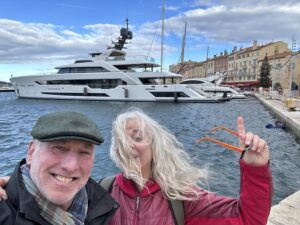 One day, we took the local bus to Sainte Tropez. We checked out the Yachts, walked the empty streets and seasonally closed town, enjoyed a half-filled market, ate a terrible meal at an exorbitant price, and posed for a picture with the Brigitte Bardot statue (famous actress in her day, for those too young to remember). Half a day in the Rich and Famous playground was sufficient. St. Max has yachts, St. Max has good food, St. Max has livable prices (almost) – Good Job, Ursula!
One day, we took the local bus to Sainte Tropez. We checked out the Yachts, walked the empty streets and seasonally closed town, enjoyed a half-filled market, ate a terrible meal at an exorbitant price, and posed for a picture with the Brigitte Bardot statue (famous actress in her day, for those too young to remember). Half a day in the Rich and Famous playground was sufficient. St. Max has yachts, St. Max has good food, St. Max has livable prices (almost) – Good Job, Ursula!
We extended our stay two days as the price was right, and the apartment views were stunning. Roaming the quiet streets of St Max was peaceful. Then, off Antibes.
Road Tripping, again
Both wanting to avoid the typical navigation and route selection argument, we agreed to just follow the ocean road. No diversions; stay close to the ocean until we arrive at our destination. It was a longer route, but there could be no room for disputation – Ocean to your right, land to your left, pretty simple, hard to argue. Sometimes, your protective angels whisper instructions into your ear. When they do, shut up and just do it.
In parts, the coastal road was windy, narrow, sometimes congested, and 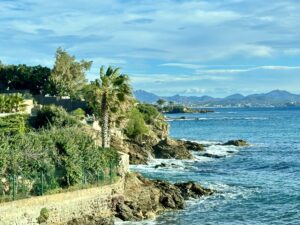 occasionally harrowing, but always amazing! The Riviera from St. Max to Antibes is a mixture of California’s 17-mile drive and Italy’s Amalfi coast – in other words, it’s spectacular. The coastline is not much for long, lonely stretches of beach, but more of the rocky, sudden drop into the ocean variety of shoreline. It’s no wonder why the ‘Schicky Micky’ or ‘Rich and Famous’ as we Americans call them, flock to the Riviera. We took our time; we were the cause of the congestion on the road and other’s road rage, but we enjoyed viewing the scenery and capturing it with photos. It was a good day!
occasionally harrowing, but always amazing! The Riviera from St. Max to Antibes is a mixture of California’s 17-mile drive and Italy’s Amalfi coast – in other words, it’s spectacular. The coastline is not much for long, lonely stretches of beach, but more of the rocky, sudden drop into the ocean variety of shoreline. It’s no wonder why the ‘Schicky Micky’ or ‘Rich and Famous’ as we Americans call them, flock to the Riviera. We took our time; we were the cause of the congestion on the road and other’s road rage, but we enjoyed viewing the scenery and capturing it with photos. It was a good day!
Antibes
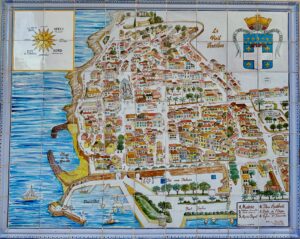 Antibes is a very, very old town. Local historians claim it’s over 2,800 years old. The first Phoenician settlers established themselves in the natural, protective bay, and locals have made a living from fishing from here ever since. Now, they make a living supporting the yachting industry and those wealthy enough to buy them…….and park them in the marina. One tour guide suggested that the Antibes marina was the largest in Europe. Perhaps he’s right; I don’t know. But, when surveying the numbers and sizes of the yachts moored along its shores, he could be right.
Antibes is a very, very old town. Local historians claim it’s over 2,800 years old. The first Phoenician settlers established themselves in the natural, protective bay, and locals have made a living from fishing from here ever since. Now, they make a living supporting the yachting industry and those wealthy enough to buy them…….and park them in the marina. One tour guide suggested that the Antibes marina was the largest in Europe. Perhaps he’s right; I don’t know. But, when surveying the numbers and sizes of the yachts moored along its shores, he could be right.
The town has a young crowd. We wonder if they are made up of the staff from the Yachts. Most live in town when their boats are maintained, updated, or repaired in dry dock. They live onboard otherwise. We drank beer with one such group 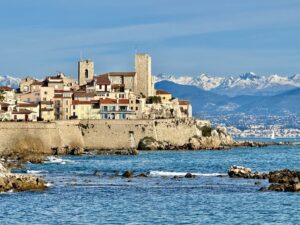 just trying to find out what Yacht life was like. Although it sounded exotic, it’s not for us. I’m not even sure I’d want to be an owner. Nice guys tho, they lead an interesting life.
just trying to find out what Yacht life was like. Although it sounded exotic, it’s not for us. I’m not even sure I’d want to be an owner. Nice guys tho, they lead an interesting life.
Another B***y Fortress
For a military guy, Vauban is a known name. He was responsible for designing 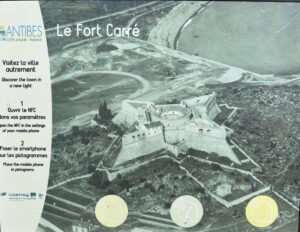 the most famous forts before cannons shot iron and rifled projectiles. He designed the one in Antibes (Le Fort Carre – the square fort), and the marina is named in his honor. The square fort, settled on a prominent knoll overlooking the area, is clearly of another time and another fight. The walls are tall. The walls surrounding the square, almost star-like, are not so tall, but tall enough that one is not going to simply climb them. Then, there are star-shaped walls around those walls. The fort’s grounds are enormous, but the living space is relatively diminutive. Only 50 people actively protected the fort from the inside (I understand there were barracks outside housing hundreds). Those in the fort lived and operated in relatively small circular enclosure within the massive walls. It may have been a decent gig back in the day, but I’ll pass. It’s too claustrophobic within, but spectacular views if you pulled guard duty above.
the most famous forts before cannons shot iron and rifled projectiles. He designed the one in Antibes (Le Fort Carre – the square fort), and the marina is named in his honor. The square fort, settled on a prominent knoll overlooking the area, is clearly of another time and another fight. The walls are tall. The walls surrounding the square, almost star-like, are not so tall, but tall enough that one is not going to simply climb them. Then, there are star-shaped walls around those walls. The fort’s grounds are enormous, but the living space is relatively diminutive. Only 50 people actively protected the fort from the inside (I understand there were barracks outside housing hundreds). Those in the fort lived and operated in relatively small circular enclosure within the massive walls. It may have been a decent gig back in the day, but I’ll pass. It’s too claustrophobic within, but spectacular views if you pulled guard duty above.
It’s not something you’d want to live in today, but I guess it was at the top of its game in the 1650s. It protected France from that upstart principality of Nice (or whatever it was called at the time). Actually, it was the other way around as France soon conquered the principality, and since then, it’s been part of France.
Modern Tourist Attraction
From the fort’s ramparts, one can quickly survey the coastline and see the former principality of Nice, Monaco, and Italy, with the snow-peaked Alps’ foothills in the distance. Technology made the fort useless in time, and the surrounding open space was converted into sports fields. Today, the whole complex belongs to the French Sporting Agency(???), and the fort has been reconstructed for tourists. At the same time, the sports fields feature international soccer games. It’s a win-win for the fort, the city, and peace! Very Cool!
Hiking Cape Antibes
To the South of the town lies a cape called, not surprisingly, Cape Antibes. At the southern end of the secluded cape sits a half dozen very old Named Chateaus with expansive lands. Many of them formerly slipped into the rocky shores of the Med. I say formerly as some time back, the French Government passed legislation that the shoreline belongs to the people and either bought, exhorted, or did something to re-secure access to the coastline and about 15 meters upland for public access. Someone build a fantastic, long rock wall along the entire breadth of the southern cape to protect the Chateaus from prying eyes. But they also built a stone pathway across this pristine and rocky shore. The hike from one end to the other is breathtaking.
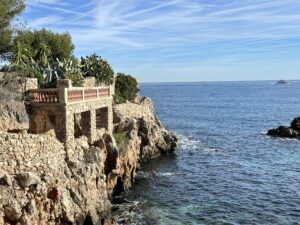 There are no OSHA safety rules in operation here, as several spots are very narrow and dangerously close to the high precipices. But, somehow, no one gets hurt, no one falls in, the dogs are well-behaved, and the kids don’t bump into everybody. It’s crazy that people can act like mature adults in public and don’t need ‘nannies’ to protect them from themselves. This is very comforting to experience. The experience was unexpected. We went for a walk along the coast. We found ourselves at the other end of the cape several hours later with over 20,000 steps logged into our pedometers…a 9-mile hiking day! Fantastic day with excellent fitness and memorable views.
There are no OSHA safety rules in operation here, as several spots are very narrow and dangerously close to the high precipices. But, somehow, no one gets hurt, no one falls in, the dogs are well-behaved, and the kids don’t bump into everybody. It’s crazy that people can act like mature adults in public and don’t need ‘nannies’ to protect them from themselves. This is very comforting to experience. The experience was unexpected. We went for a walk along the coast. We found ourselves at the other end of the cape several hours later with over 20,000 steps logged into our pedometers…a 9-mile hiking day! Fantastic day with excellent fitness and memorable views.
Nice in the Windshield
Tomorrow, we’re off to the outskirts of Nice (that former principality). It’s only a dozen miles away, so it’ll be the shortest relocation we’ve done on this trip yet. We’re looking forward to it. Stay tuned
Nice is Nice (Ok, not so clever of a by-line….but I like it)
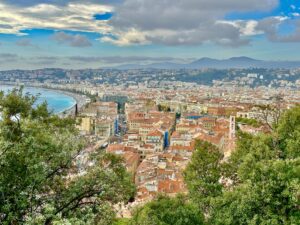 The trip from Antibes to Nice is only about 15 miles. The short distance covers two former sovereign entities, now all just part of Southern France and the Cote de Azure. It’s a pleasant drive, beach on one side, hotels, apartments, restaurant, stores, amusement parks, and all sorts of holiday attractions on the other, the entire way. It’s all just one big playground for those searching for a beach, sun, sand, and a joie de vivre.
The trip from Antibes to Nice is only about 15 miles. The short distance covers two former sovereign entities, now all just part of Southern France and the Cote de Azure. It’s a pleasant drive, beach on one side, hotels, apartments, restaurant, stores, amusement parks, and all sorts of holiday attractions on the other, the entire way. It’s all just one big playground for those searching for a beach, sun, sand, and a joie de vivre.
But, this is no ordinary seaside village, as it was when founded around 380 BC by the Greeks. They called it Nike after the God of Victory! Now they call it Bella Nice la Bella (Nice the Beautiful). And it is!
From the battle ramparts of the Square Fort in Antibes, one views the coastline, and Nice looks to be a busy coastal town, famous for movie festivals, paparazzi, and boats, but not much more. In reality, it is much, much more. There is a deep breadth to the city. It lies not only along 7 miles of beachfront but extends back into the surrounding hills for quite some distance. The main streets are interlaced with streetcars, subway stations, historic landmarks, and all other vestiges of a very active, busy, and thriving major living city. I was not expecting that,,, and it’s a welcomed surprise.
Affluence in the Air
It’s also the home of the Rich and wanna-be Famous. Money is in the air; you can smell it. And when you can’t, just look at how the ‘old Q-tips’ are dressed. I saw more than one Octaganarian sporting a mini-skirt, high-heeled boots, fur-lined coats, and stretched faces adorned with all sorts of glitter. Genuine bling, I suspect. The famous hotels, casinos, yachts, and high-end clothing stores offer abundant venues for their enjoyment and expense. It’s a ‘well to do,’ Old Money area.
It also appears to be a working town. There are plenty of gyro stands, pastry shops, and outdoor markets for those of us without personal chefs and their staffs. It’s a very livable place.
Joie de Vivre
Ursula and I found ourselves strolling along the beach and came upon a beachside beverage shack. We grabbed a coffee, well, actually a beer and coffee, and lounged on one of those folding canvas beach chairs, listening to ’70s and ’80s music over the loudspeaker as it drowned out the sound of the surf while we took in our vitamin C and D through Sunshine. Life can suck,,,,, but not always. It can be really, really good if you let it be so.
More Museums (and Palaces)
The museums are all encased in former palaces. The buildings are as 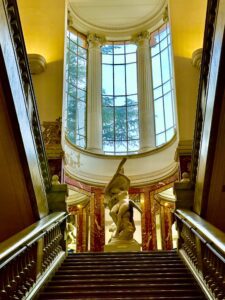 much an attraction as the artifacts and art they showcase. Nice showcases many. Of particular noteworthiness is the Massena Museum, the former Massena Chateau of one of Napoleon’s favored Field Marshals. Exquisite, class, and taste are a few of the adjectives that come to mind when staring agape at the inside of his former home. Elegance is another.
much an attraction as the artifacts and art they showcase. Nice showcases many. Of particular noteworthiness is the Massena Museum, the former Massena Chateau of one of Napoleon’s favored Field Marshals. Exquisite, class, and taste are a few of the adjectives that come to mind when staring agape at the inside of his former home. Elegance is another.
Many palaces are overwhelming to the point of being gauche. They reek of extravagance and riches. This place is understated, refined, and clearly of better quality than most that we’ve seen thus far. A definite must for a visit. It lies on the Promenade de Anglais, the boulevard tracing along the beach. Now, there is a garden and museum worth the visit. It also features many local art pieces, remarkably a few from Hercule Tracheal (1820-1872). We’ve seen that guy’s paintings all over Nice and a few in Antibes. He must have been a local favorite in his day. Clearly, he still is.
Zimmer Luck
Zimmer luck combines bad fate (perhaps karma catching up with us) and stupidity. Sometimes, stupidity is incited by lousy communication. So, there we were, on our first day, heading out of the Air BnB apartment, and Ursula muttered something under her breath as she exited the door. As I typically do, I brushed off the utterance, but I made sure to close the door behind me and ensure it was properly locked. That’s when she stared at me with an astonished but vacant curiosity and enunciated, “Did you not hear me?”. “Well, no, not really. What’s up?” Said I. “I said I couldn’t get the key out of the lock, and you need to get it,” said her. Oh,,,,,, Shit! responded me.
So, we spent another furious few hours solving problems of our own making. Fortunately, the apartment manager was spot-on, drove from Monoco to the apartment in no time flat, found a locksmith, and got us back into the apartment…for a minor fee. I’m often reminded of that sage advice from that wonderful movie suggesting, “Stupid is as Stupid does!”
Food and Service
I dropped into a local Brasserie (like a neighborhood Applebees, but with class and excellent food) and had a great afternoon meal. I mean really good food. Kinda like the type you see on those cooking shows. It was Brasserie, not a 3 or 5 Micheline star place. The waiter was about my age (or so he looked); clearly, he had been doing this for a long while. It reminded me that restaurant wait staff in Europe earn a living wage and that a waiting table is not a starter job but an advocation. The food is not expensive, but the service is professional.
The wait-staff takes pride and responsibility in ensuring you have a great meal, it’s exquisitely prepared and presented, and you’re left alone. No, “Hey Honey, how y’all doing?” every five minutes. I don’t know why I mention this other than to note that quality is possible in all forms, and professionals take pride in what they do, regardless of what they do in life. It makes a difference. I enjoyed the quick, inexpensive meal, tipped my waiter (not too much to maintain the standard), and carried on with my day. That is a quality of life to be desired everywhere.
Farewell Nice
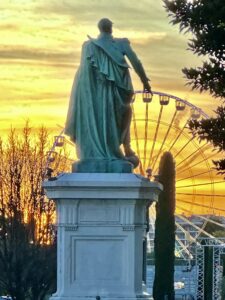 Nice was very unexpected in the cool department. We really enjoyed it. It’s a full-blown large city with all the attractions that we tourists love to visit in abundance. To top it off, it’s on the Cote de Azure….with amazing blue waters and surf. But, it, too, ended up in our rearview mirror as we began the long trek back to Austria….and the dreaded snow and cold.
Nice was very unexpected in the cool department. We really enjoyed it. It’s a full-blown large city with all the attractions that we tourists love to visit in abundance. To top it off, it’s on the Cote de Azure….with amazing blue waters and surf. But, it, too, ended up in our rearview mirror as we began the long trek back to Austria….and the dreaded snow and cold.
The first stop along the way is Finale Ligure, Italy! We crossed the border and traversed through the favorite hot spots of Ventimiglia and San Remo. Yeah, I never heard of them before this. But my well-traveled spouse assures me these villages are hot spots in the summer. Finale Ligure is a bit off the beaten path, and our small room is in an abode of four rooms carved into the rock face a few hundred feet above the surf. If you could walk 300 feet straight out, you’d be in the ocean. But, If you can’t levitate or don’t want instant death, you have to take the switchback roads that take about 15 minutes descent before reaching the surf. More on this to follow – Stay Tuned
Finale Ligure
Isolated with narrow switchback back roads leading up to nowhere. Overcast weather putting a gray spell on everything. The sole parking spot rested on a 10% incline, and the bumper leached over into oncoming traffic, but there was none. The gate was impenetrable until we re-read the online instructions 5 times; our room was diminutive, with no kitchen, only an electric hot water maker for coffee. Earl Gray and some cumquat concoction of dried coffee were the only options. The other rooms appeared empty, and it looked like staff only showed up in the mornings. There were no restaurants or stores within a 15-minute drive. Ursula said, “We’re out of here! This isn’t what I imagined when I booked this place.” They won’t even respond to my texts!” It was late; we were tired from the day’s drive and had no backup plan, so we decided to stay for one night. We finally found the one bad AirBnB spot on our tour.
Morning Arrived
Around 0800, the staff arrived with a full continental breakfast; most of the jams and breads were homemade. We set the small table on the tiny landing leading into the room. We had two chairs – it was enough. That morning, the sun was resplendent as it crested the watery horizon. The Azure coast of the Mediterranean Sea lay a few hundred feet below us and flowed out into the endless horizon. Our view from the small landing to our front door surveyed all. We had a commanding, unobstructed full view of the ocean, its beaches, a few local ruins, and not-so-distant towns.
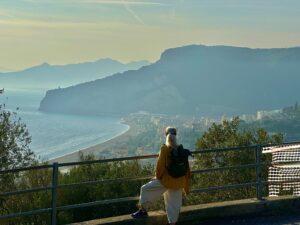 To our back climbed more of the green mountain and a few old, rustic buildings. Stunning, absolutely stunning. And to boot, we were visited by an adorable and well-behaved local kitten who climbed all over our calves looking for attention. We sat there eating our breakfast, drinking fresh coffee, and laughing at how much difference a well-rested morning can make. This Airbnb location was one of the best we’d visited. The town could be accessed by a 20-minute steep walk down an ancient rock-lined trail. The beach was 15 minutes down the steep switchback roads, and the silence was defining, except for the surf 300 meters down. Not bad.
To our back climbed more of the green mountain and a few old, rustic buildings. Stunning, absolutely stunning. And to boot, we were visited by an adorable and well-behaved local kitten who climbed all over our calves looking for attention. We sat there eating our breakfast, drinking fresh coffee, and laughing at how much difference a well-rested morning can make. This Airbnb location was one of the best we’d visited. The town could be accessed by a 20-minute steep walk down an ancient rock-lined trail. The beach was 15 minutes down the steep switchback roads, and the silence was defining, except for the surf 300 meters down. Not bad.
It’s all Relative
A good friend from Alaska and I were texting, telling me he was heating up the car before going into town. It was -20 out. Shortly after that, I received a text from my security system, saying the thermostat in the house had dropped 6°, and I asked if everything was okay? At that time, I was collecting sun rays on a beach in Finale Ligure and thought, yeah, everything is okay.
My girl must be half Mountain Goat! It must be an Austrian thing. She effortlessly glides up and down the rocky trails breathlessly. I sometimes struggle to keep up.
The Town
The town (Finale Ligure) is relatively non-descript and offers very little in winter. It’s cute and unpretentious, and the local grocery store has most of one’s needs. I understand this is a hot summer spot for hikers and mountain bikers. I suspect then most of the stores and restaurants are open.
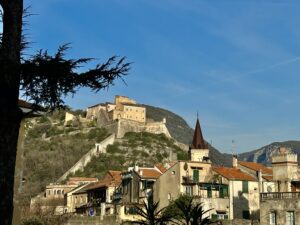 The next town, Finale Borgo, offers some interesting sites within its walls. Cobble-stoned roads, delicious restaurants, and lots of outdoor equipment shops of the skiing, walking, and mountain climbing variety. One of the gates features a sign proclaiming this is where the decapitated heads of criminals would hang to warn off others from similar despicable acts or something like that. Attractive signs in this town. There’s a large fortress on the hill just behind. Unfortunately, it was closed for the season.
The next town, Finale Borgo, offers some interesting sites within its walls. Cobble-stoned roads, delicious restaurants, and lots of outdoor equipment shops of the skiing, walking, and mountain climbing variety. One of the gates features a sign proclaiming this is where the decapitated heads of criminals would hang to warn off others from similar despicable acts or something like that. Attractive signs in this town. There’s a large fortress on the hill just behind. Unfortunately, it was closed for the season.
The area’s attractions are beaches, mountain walks, and bike riding. Of each, the area seems to offer very alluring opportunities. In the spring and summer, outdoorsmen flock to these hills. We didn’t do much but walk beaches, enjoy the views, and investigate the nearby villages and their culinary delights. It was a satisfying two days. We could have stayed longer, but our reservation for Como was not refundable. Time to move north to the cold and leave behind the sun, sand, and beaches. All good things must end so you can build new ones in the future.
Como
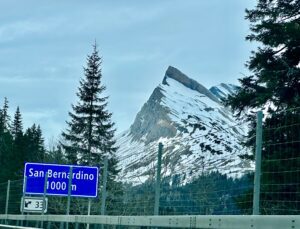 The San Bernardino Pass can be treacherous, but it wasn’t. Unseasonably, there was little snow, less traffic, and no problems trespassing through its dangers. The snowline was around 1300 meters, but the roads had long dried. Only one valley through the pass seemed to capture its old snow and clung to it until warmer temperatures would arrive when the spring suns reached the valley. Como was our last stop before returning the our Austrian apartment. I’d always wanted to visit the famous Como on the lake of its namesake. It has quite a history and a reputation as a beauty spot for the well-off in Northern Italy.
The San Bernardino Pass can be treacherous, but it wasn’t. Unseasonably, there was little snow, less traffic, and no problems trespassing through its dangers. The snowline was around 1300 meters, but the roads had long dried. Only one valley through the pass seemed to capture its old snow and clung to it until warmer temperatures would arrive when the spring suns reached the valley. Como was our last stop before returning the our Austrian apartment. I’d always wanted to visit the famous Como on the lake of its namesake. It has quite a history and a reputation as a beauty spot for the well-off in Northern Italy.
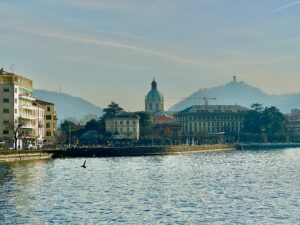 After the colors and scents and warmth of Italy and France’s coastline, it could have been more impressive. My first take was that this was a Swiss city where the inhabitants spoke Italian. The architecture is more Germanic than Italian, although the buildings have plenty of Italian accents. The streets are wide, with plenty of walking and biking space. The people dress more Swiss-like (I suspect that has much to do with this being a much colder region versus the warmth on the Mediterranean coast). And the prices are like in Switzerland. The fact that the border to Switzerland is a mere 10 miles up the road makes this all reasonable. But, just unexpected.
After the colors and scents and warmth of Italy and France’s coastline, it could have been more impressive. My first take was that this was a Swiss city where the inhabitants spoke Italian. The architecture is more Germanic than Italian, although the buildings have plenty of Italian accents. The streets are wide, with plenty of walking and biking space. The people dress more Swiss-like (I suspect that has much to do with this being a much colder region versus the warmth on the Mediterranean coast). And the prices are like in Switzerland. The fact that the border to Switzerland is a mere 10 miles up the road makes this all reasonable. But, just unexpected.
End of tour virus
We walked the limits of the lake’s public access. It’s stunning; the mansions bordering the water are very Old Money, elegant but subdued in their own regal way. Most of the city’s high-end stores clearly have a significant local clientele. The town is not as large as expected as it is bounded by two mountain peaks and the lake. But it is a charming and familiar feeling. I must have picked up the ‘end of tour’ bug as we approached Vorarlberg. Much of my time was spent in bed or on the apartment’s couch, snoozing away. Como was a good transition town between the fantasy of traveling the south and the reality of life back home (Austria home). I’m happy to have visited, but it’s a ‘one and done’ type of place. Been there; no need to go back.
On the Road Again
Again, the weather moved in; precipitation in the lower regions threatened snow in the higher. Ursula and I feared hitting a snowstorm on the way back up the Gulm Alp and our apartment. It wouldn’t have been the first time. Our fear of lugging our bags 45 minutes up the hill in snow, ice, and sleet didn’t materialize. This is good because we’d collected an unreasonable amount of booty along our travels, and it took us three trips each up the 4 flights of stairs just to get everything back into the apartment. We were home. Our Nomading in Southern France Adventure was over.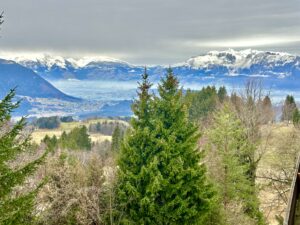
A few parting thoughts and observations.
When eating out, there’s only one beverage to order, the Vin de la Maison, Rouge, preferably. Although the beer is good, you can’t beat the French or Italians for their local red wines. While one could order a favored bottle, why? The price for a quarter liter was around 4 euros; one could get a half liter of house wine for about 7-8 euros. It’s always excellent, and one wonders why the French and Italians are not all Winos. I guess from years of practice…..and discipline.
Al Dente
That’s what it’s called. If you order Al Dente Pasta in the States, you often end up with a vacuous stare from your wait staff. Others will act knowingly and say, ‘Of course,’ then serve you a slimy, mushy, tasteless noodle. It goes without saying that in France and Italy, all pasta is served Al dente, just a little bit undercooked, so it has a slight chewiness. One often hears that you could eat pasta here with nothing on it. You can, because it’s properly cooked. Just a small delight
Lunch and dinner hours
It’s a cultural thing. It is pretty draconian. Lunch is served from 1200-1400 period. Dinner does not start until 1900 period. If you want a good prepared meal in a restaurant, that is when you will eat, period! It’s tough as hell to find a place open before or after those hours. Occasionally, you might see a gyro stand. Still, the only real alternative is to locate a grocery store and buy a sandwich. By the way, in most towns, the grocery stores and every other store is closed from 1200-1400. Of course, the staff are all out eating lunch. If you plan to travel here, mentally prepare your stomach for those hours or pack a sandwich in your backpack.
The beaches are all different
We scoped the coastline on Google Earth for hours and hours, looking for just the right vacation beach spots. Most of the French and Italian coastline comprises precipitous rock faces that fall directly into the surf. What’s left is a few rocky, inaccessible coastlines and even fewer beach-lined coasts. We found only a few spots where the beaches are deserted and miles long (mainly in the Camargue region of France). Many are white sand, others are more granular, darker sand, and small pea-gravel. We found the pea-gravel beaches are the most therapeutic for walking. The smooth stones and surf gently massage the soles of your feet and soul. The hours of searching for beach and sand were worth the effort and then some.
Gas
We were fortunate to borrow a friend’s car (thanks, Marion) for this trip. We’re still determining if the adventure would have had the same quality without it. Equally fortunate is that it only consumes a little gas, and we only used it to get from one town to the next, not ‘in-and-around travel.’ That’s good because gas prices on the highway can reach up to $8.36 per gallon. Yup, you read that right. It’s about $7.11 in the cities. Kinda makes you wonder…..
Dreaded bikers
The coastline is constantly terrorized by biker gangs! It’s just awful. Well, not the biker gangs as in the US, but the typical French and Italian biker gangs. Each roving band is made up of 6 to 30 lycra-clothed, colorfully helmeted, loud-speaking sportsman who dominates the roads with their ultramodern racing bikes. They travel three or four abreast with a dozen more drafting off the leaders. I guess each is a ‘Tour de France’ contestant in training. They won’t move over to let traffic pass. I guess it’s their right. Most move reasonably quick, that is, unless you’re in a car behind them with a place to be. These brightly clad gangs are all over; you’ll see dozens and dozens of them on the weekends or when the sun is out. Keep an eye out for the bikers before you cross the roads! It’s dangerous out there, folks!
Religious Iconography
Maybe it’s just me, but I’m struck by all the religious iconography available in all the museums we visited. While the artists are all clearly gifted artisans, their selection of painting topics just seems gruesome. Most feature disfigured remains, stabbings, severed heads, and vile acts of cruel violence. One finds a few pics of pre-sainthood dudes being flayed alive, and a few depicting burning villages with wonton acts of rape, pillage, and plundering around the cathedrals. I just don’t get the relationship between religious iconography and all this barbarity. It makes you wonder about the origins of the faith if its most highly prized or memorable stories to be represented in iconography are all about pain and misery. I don’t get it; it’s not like this is the exception; it seems like it’s the rule. Benevolent acts of kindness, love, and forgiveness rarely seem to make the canvas. I guess skilled painters back then were like mass media purveyors of their day.
Diconnecting
Disconnecting from the world by traveling the world. It’s easy to get down, depressed, or even suicidal when watching and reading the constant stream of horrid messages coming across our screens. The world is falling apart, and everybody is to blame (except me); it’s time to hide in your basement. It’s strange, though, that when you actually get out in the world and unplug from media, just how majestic and wonderful is this planet we live on. We traveled for two months to two different cultures. Each of these cultures has centuries of conflict, war, hatred, and violence.. name your fear. And yet, after thousands of miles and dozens of villages, towns, and cities, we found none. Not that some of it’s not there; indeed, it is. But regardless of where we traveled, we did not observe the issues you see painted daily on the small screen; we didn’t fear for our safety, nowhere. Not even in the various medinas in Morocco.
On the contrary, we felt safe wherever we went. The only violence I observed was that one act of an attitude correction I noted in my Morocco blog. That was it. The world is changing. We may be undergoing tumultuous times. But it’s not omnipresent. It’s not in every town and village every hour of every day. Perhaps these events are cherry-picked from isolated occurrences and plastered on our screens to represent everywhere? Mark Twain wrote that travel is fatal to prejudice, bigotry, and narrow-mindedness. From time to time, it’s worthwhile to turn off the media and just get out in the world to see what’s happening. It is heartwarming.
This brings to a conclusion our Snowbirding in Southern France (part Deux Blog). Stay tuned for the next edition of Vorarlberg and Barcelona. The adventure continues.
Southern France Part Deux Short Video
Thanks for joining our adventure. If you enjoyed it, leave a comment below.
(Snowbirding in Southern France, Part Deux)
Check out our Youtube Channel for short vids of Morocco and Southern France, Part I. Zimmers Landing Youtube Channel
Photo Collage of sights along the way – Enjoy
